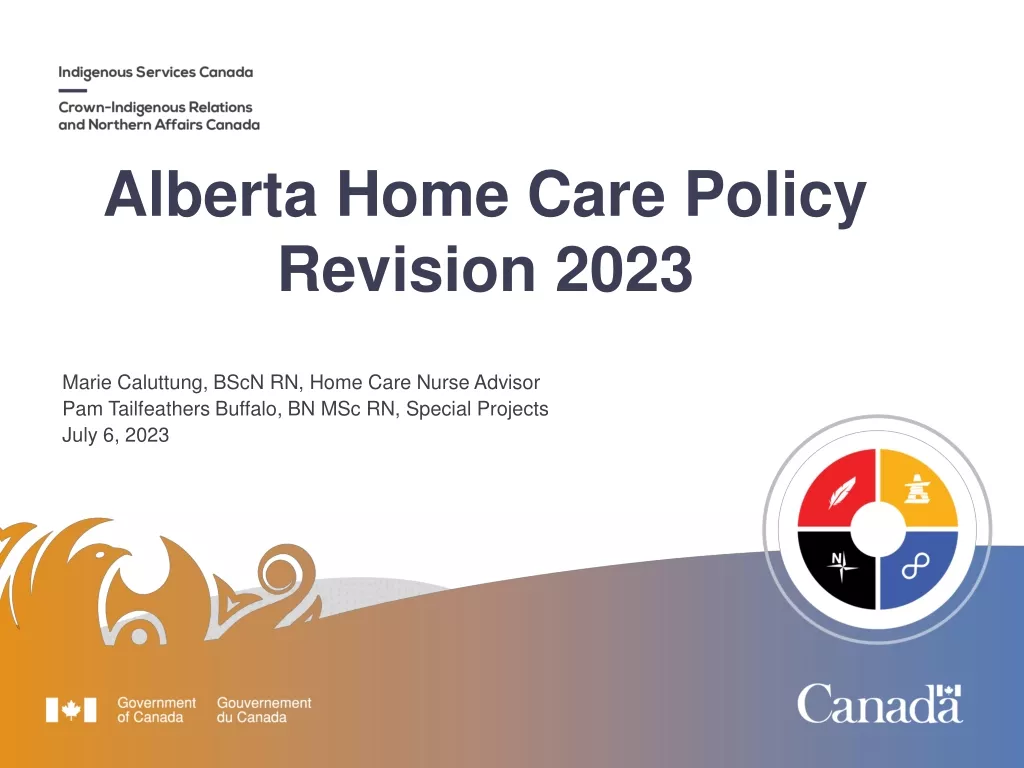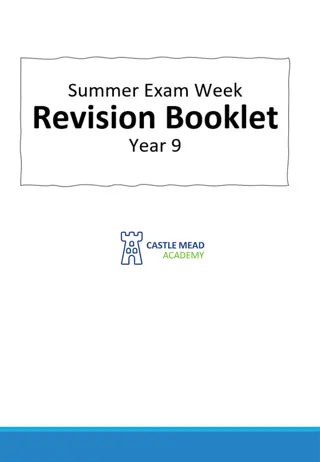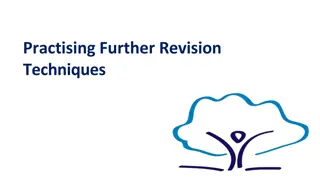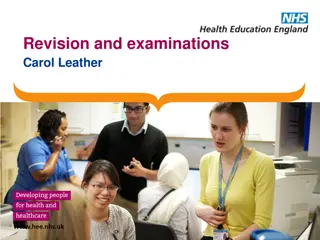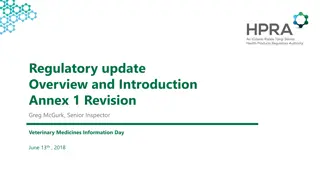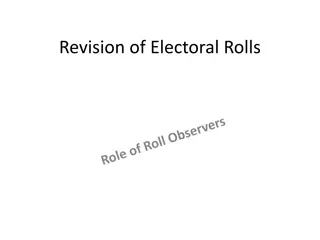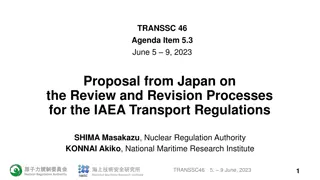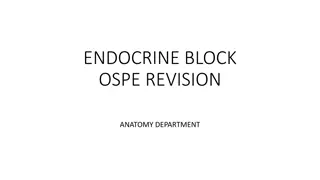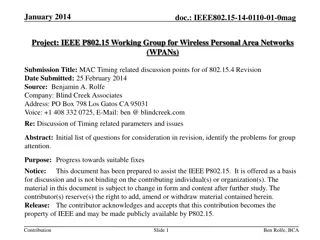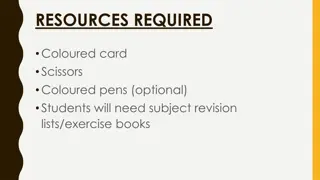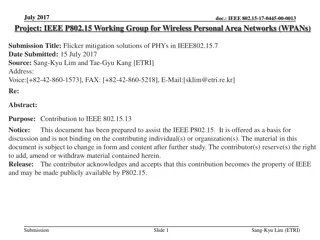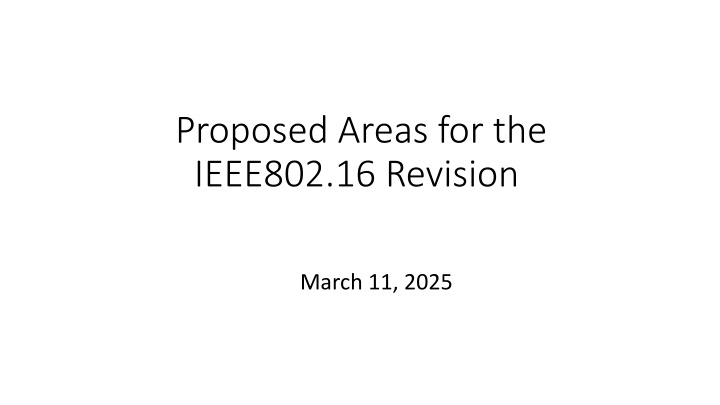
Focus Areas for IEEE802.16 Revision: Enhancements & Recommendations
Explore proposed areas for the IEEE802.16 revision, focusing on new NB sections, coexistence requirements, BSC interface refinement, mobility, MIMO, smart antennas, and more for improved standard compliance and operations efficiency.
Download Presentation

Please find below an Image/Link to download the presentation.
The content on the website is provided AS IS for your information and personal use only. It may not be sold, licensed, or shared on other websites without obtaining consent from the author. If you encounter any issues during the download, it is possible that the publisher has removed the file from their server.
You are allowed to download the files provided on this website for personal or commercial use, subject to the condition that they are used lawfully. All files are the property of their respective owners.
The content on the website is provided AS IS for your information and personal use only. It may not be sold, licensed, or shared on other websites without obtaining consent from the author.
E N D
Presentation Transcript
Proposed Areas for the IEEE802.16 Revision March 11, 2025
IEEE802.16 Revision Objective Review and possible modifications to the pre-2017 sections in the ieee802.16 standard is a huge effort with little benefit. I recommend that we focus on various aspects of the new NB sections and select one or more of the topics outlined in this presentation.
Focus Areas for Revision Various aspects of the baseline ieee802.16 standard were assumed to be applicable to ieee802.16s/t but this was not thoroughly verified. Here are examples: mobility and seamless handover. Spatial multiplexing and diversity As the new standard is used in various applications, the need for adjustments or new modes of operations emerges. For example, very short payloads application results in poor frequency utilization and relatively high latency. Operation in the VHF & UHF bands requires coexistence with legacy systems. Modes of coexistence include operation side by side legacy in distinct channels and operation in the same channel ( Gray channel). We may want to add coexistence requirements to the standard.
Focus Areas for Revision (cont.) Base Station Controller (BSC) Interface: VHF and UHF bands are relatively narrow and high frequency utilization of these bands in a multisector dense areas is important. IEEE802.16t is making a reference to a Base Station Controller which has a vew of the entire network and can allocate the available bandwidth more efficiently to the individual base stations. We can define the BSC interface as part of the revision.
Mobility & Seamless Handover PtMP Legacy Ieee802.16 PtMP defines procedures and messages for seamless handover of a remote from one Base Station to another. The procedures involve the establishment of a second connection to a new BS before the remote is disconnected from the previous BS. The bandwidth available in a narrow channels may not be sufficient to support the legacy handover procedures in a timely manner in a high-speed mobility scenario. Note that seamless handover requires the addition of a central mobility management server which is not specified by ieee802.16 (such an entity referred to as ASN-GW, was specified by the WiMAX forum). We may want to look for an alternative solution which does not require a mobility management server. DPP The ieee802.16t DPP mode is connectionless and as such, the legacy procedures are not applicable. We may want to add specific handover requirements/procedure for DPP mobility.
MIMO, Beam Forming and other Smart Antenna Technologies We may want to review the smart antenna requirements in ieee802.16-2017: The requirements may not be up to date They may not be efficient in narrow channel scenarios.
Low throughput short Messages Applications The total throughput may still be high relative to the channel bandwidth because of the number of devices/applications running concurrently on the same channel may be high. Due to the length of the message, the ieee802.16 PDU overhead becomes significant, and the frequency utilization becomes low. Concatenation of multiple payloads in one frame may not be allowed if the application is time-critical.
Add Push to Talk Digitized Voice Application A low bit rate compressed digital voice, e.g., AMBE+2 at rate 2,450 bps with 20 ms voice packets, 49 voice bits per packet. Multiple multicast groups. In each group, only one participant can transmit at one time while all the rest are in listening mode. A participant can only transmit in a multicast group if the group is idle. Switch of the PTT button triggers the activation of the multicast group. Functional equivalent PTT and Squelch signals are used to control the operation of the multicast group.
Coexistence in Grey Channels Many VHF/UHF channels are used today for Push to Talk analog and digital voice. The utilization of the channels however is often very low. The term Gray Channels refers to low utilization voice channel (utilization typically < 5%) which can be used most of the time for data applications. In gray channels, voice is considered higher priority than data. As such: Start of data transmission is subject to no voice activity A data application should stop once start of voice activity is detected. Data application should have no impact on voice users.


